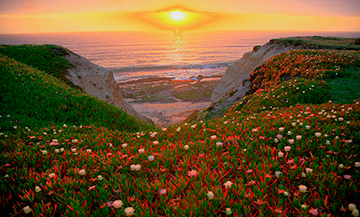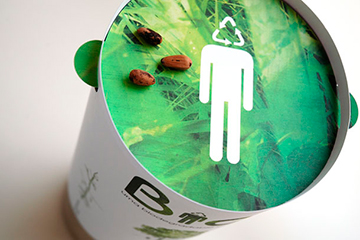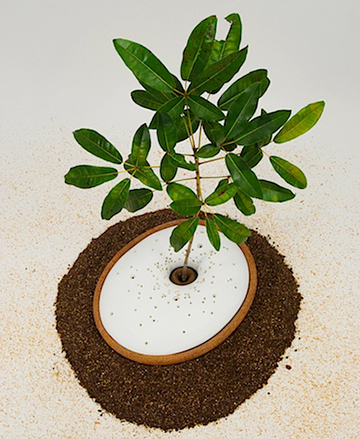Have you noticed?
We’ve started taking health back into our own hands. If you missed last night’s two-hour TV special, Escape Fire: The Fight To Rescue American Healthcare, try to locate a copy or find out when it will run again. Featuring Dr. Andrew Weil, he said, “I have argued for years that we do not have a health care system in America. We have a disease-management system—one that depends on ruinously expensive drugs and surgeries that treat health conditions after they manifest rather than giving our citizens simple diet, lifestyle and therapeutic tools to keep them healthy. Why? A major culprit is a medical system based on maximizing profits rather than fostering good health.”
Google the CEO earnings of the major insurance companies that insure most of us. They made between 10 and 19 million dollars each in 2011 in compensation. Under new laws going into effect, insurance companies have to pay out 80% of what they charge in actual insurance claims each year. If their gain is more than 20%, the people they insure get a rebate at the end of the year. So companies are raising their rates right now, some exorbitantly. There are states that prevent them from doing so beyond annual cost of living increases. New York is one of them. My state must be one of them also because my monthly rate went down recently. But if you’re in a state that has legislators who are scrambling to protect the obscene profits of insurance companies, your rates probably went up. Such a deal, right?
From our food choices to our active participation in medical decisions, we’re realizing that our bodies are ultimately ours to care for.
So, why would we abandon an intimate claim at death?
Sure, we have to let go eventually (none of us get out of here alive), but we don’t have to hand the rituals of dying over to strangers and pay exorbitant fees to do so (the average funeral costs more than $6,500).
It doesn’t make sense to me that about 70 percent of American deaths are handled by the paid staff of hospitals, nursing homes, and funeral parlors. The bodies of our loved ones are prepared for burial (often with toxic chemicals) by people who did not know—much less love—the person who died. Fifty and 60 years ago, my mother was a member of a group of volunteer women in the community who “dressed the dead.” Hair was fixed, clothing altered, and a loved one put to rest in their finest. The women also managed the flowers, driving them from the church to the cemetery, and afterward, orchestrated a meal. Now, those details are taken care of by people who didn’t know the deceased or the grieving family.
That’s why I’m paying attention to an emerging trend.
Alongside health consciousness, there is a re-awakening of our connection to the process of passing, and this final act is becoming more hands-on.
Am I making you cringe?
Stay with me. This is valuable stuff.
While it’s not exactly a welcomed discussion, especially when the event seems impossibly far away, it is one that can create a greater sense of comfort, connection, and preparedness when the time comes.
“A growing group of Americans are returning to a more hands-on, no-frills experience of death,” reports the Huffington Post. “In the world of ‘do it yourself’ funerals, freezer packs are used in lieu of embalming, unvarnished wooden boxes replace ornate caskets, viewings are in living rooms and, in some cases, burials happen in backyards.”
Elizabeth Knox, founder of a home funeral resource organization called Crossings and president of the National Home Funeral Alliance, offers nationwide trainings on do-it-yourself funerals and has written A Manual for Home Funeral Care, which can be downloaded for free on her website.
“There are people who get it and think it’s a great idea. And there are people who have been so indoctrinated to think a different way, a less hands-on way, that they can’t imagine anything else,” she says.

Photo by Steve Jurvetson (CC-BY-2.0) via Wikimedia Commons
But few states actually require a funeral director to be present or to sign off on after-death care. Most have adopted more flexible laws that support groups like Elizabeth Knox’s Crossings. If you’d like to locate a home funeral resource in your state, visit the National Home Funeral Alliance directory.
More restrictive states include New York, Connecticut, Illinois, Indiana, Louisiana, Michigan, Nebraska and New Jersey.
“A lot of people don’t want to do anything with touching dead bodies. They consider it creepy,” Knox says. “But it can actually be the first step to healing and acceptance of death. Slowing down the process allows all involved to absorb the loss at their own pace.”
And when the time does come to let go, here’s an idea I really like:
Become a tree when you die.
Instead of an audacious headstone to mark a burial site, why not commemorate the passage of life with a tree that will carry on a living legacy?
The latest evolution of the crematory urn is biodegradable, and it contains a tree seed that will grow from the ashes within. Ashes from cremation are a great source of phosphorus, which serves as rich fertilization for the tree-to-be.
There are a few options:
- The Bios Urn is made from biodegradable materials (coconut shell, compacted peat, and cellulose). This urn contains the seed of the Aleppo pine, native to Mediterranean region. You can use the pine seed or replace it with a different tree.

- The Spirit Tree is a unique-looking urn made of an organic bottom shell and a chemically inert ceramic cover. The bottom piece holds the cremated remains, while the top part protects them from dispersion. You can choose your own seed or small tree to plant in the urn, and it will eventually break the ceramic cover as it grows.

- You could also make your own urn with biodegradable materials, decorating it as your heart desires, including a tree seed of your choice. I suggest a tree that is native to the area where you’d like it planted.





















































We are fortunate here to have a Green Burial Cemetery that is part of a county land trust purchase. No embalming, concrete vaults and the like. Same day burials have grown in popularity among people who want out of the funeral set up that many people either choose or think they have no other options. Most families plant a tree of their choosing to mark the site and add back to the lovely natural landscape of the land trust. The setting is beautiful, natural and peaceful.
Very wise train of thought. Seems like it today’s society you’re not allowed to do anything yourself anymore so businesses can charge you an arm and a leg to do the same thing. Sometimes they even try to keep you from doing it yourself to prevent profit loss. I recently read an article about some monks who were hand making plain coffins to help the poor and they were sued by local funeral homes.
What a WONDERFUL read! So well written; such an important message.
As a nurse/women’s health nurse practitioner myself, I have seen people pass multiple times, both peacefully and fretfully. I truly believe what you said about people wanting to take back the experience of death and make it their own (I also believe this about the other end of life – birth!). It doesn’t have to be a terribly traumatic experience in a hospital with tubes in every orifice surrounded by strangers. [As a side note – hospice is a GREAT resource to aid people and their families in creating a comfortable transition in surroundings of their choice.] I feel that this “spirit tree” and “bios urn” could be a great way to assist in the grieving process, as you noted, and to provide a continued source of comfort, as trees do even when there is not a connection to a dead loved one. I am in love with this idea.
Thank you so much for the informative and stimulating read!
thank you for sharing this information with us. It is a difficult subject but one that we must all acknowledge at some timem.
I appreciate this train of thought as well. I work in a nursing home and it’s not all gloom and doom. I feel it’s a privilege to be with a resident and their family at the time of their passing. It’s never easy, but it is special.
I hate it that you can have something happen to you, not be of the right mind to make decisions, and the rule would be to do everything to keep you alive indefinitely . No matter what the cost. Unless you file a specific writ to not allow constant resuscitation . Your entire life savings can be spent, and debt can be incurred . There seems to be no common sense anymore in this profit motivated enterprise.
I recently found out we could have a home burial here in our area, Ca. That you could be buried in a pine box. At least this is what I understand. Sorry not to have specific research to quote.
Pingback: Driving Miss Norma | Raising Jane Journal